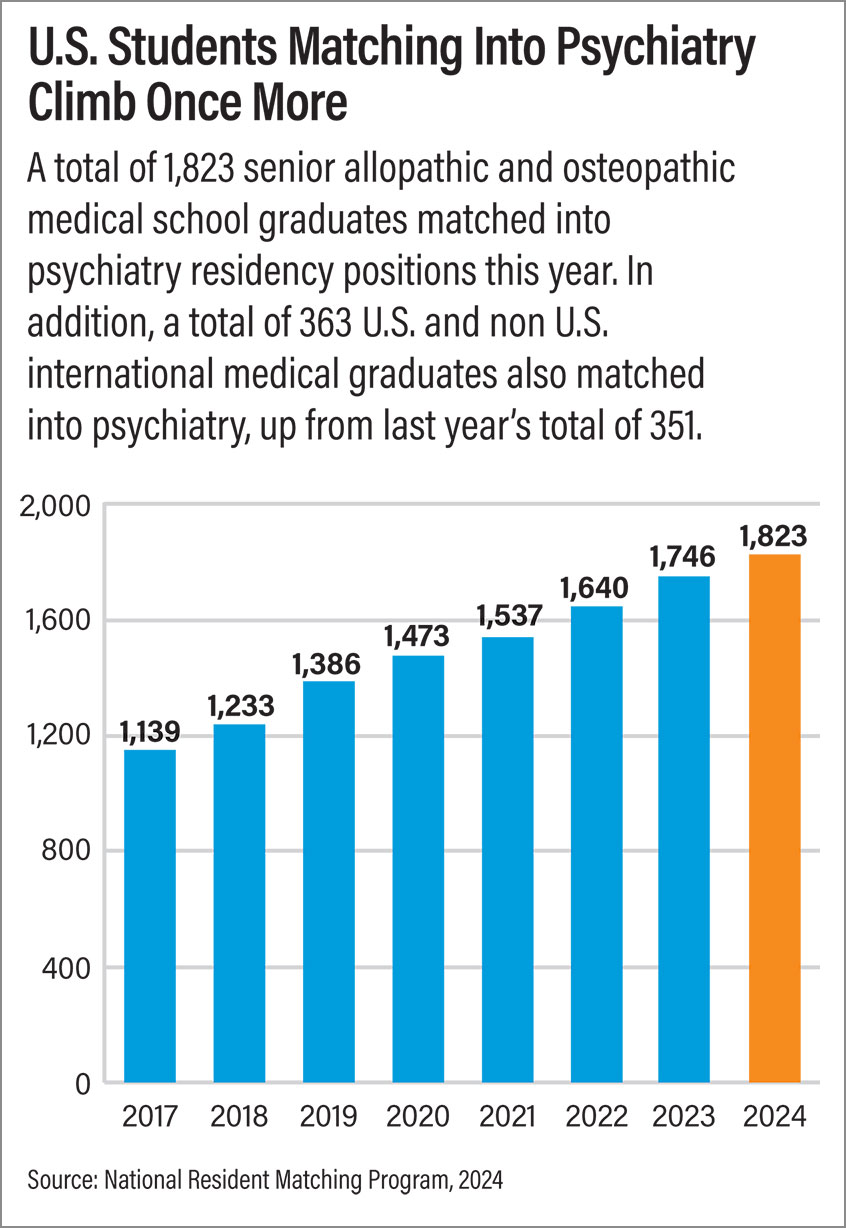Psychiatry continues to be a sought-after specialty with the promise of working in a variety of settings meeting an important need.
A total of 1,823 U.S. medical school graduates—1,323 from allopathic schools and 500 from osteopathic schools—matched into psychiatry residency programs this year as part of the 2024 National Resident Matching Program. This marks the 13th consecutive year that psychiatry’s match numbers have increased.

In addition, a total of 363 U.S. and non-U.S. international medical graduates also matched into psychiatry (up from last year’s total of 351). Finally, 63 other applicants (mostly allopathic and osteopathic graduates from a previous year) matched into psychiatry, bringing the total to 2,249 medical school graduates. Only 12 of 2,261 psychiatry positions went unfilled.
The annual match, in which the program choices of graduating medical students are paired with those of residency programs seeking trainees, is typically watched as an indicator of workforce size and makeup of the various medical specialties for the coming years. Psychiatry’s numbers have been increasing yearly since 2011.
“The match continues to reflect the passion and interest that our medical students have for serving patients with mental illness, and I am delighted that our next generation of physicians is rising to the occasion to meet the challenge of our nation’s growing mental health needs,” said APA Deputy Medical Director and Chief of Education Vishal Madaan, M.D. “A career in psychiatry allows our trainees to pursue a variety of career paths while affording excellent quality of life.”
Madaan said he supports creating innovative training pathways for international medical graduates, similar to the alternate pathway created by the American Board of Radiology, that would allow international medical graduates (IMGs) gain clinical experience in the United States while filling shortage subspecialty fellowships.
Sidney Weissman, M.D., a former APA trustee and past president of the American Association of Directors of Psychiatric Residency Training with a longtime interest in workforce issues, noted that the number of senior allopathic and osteopathic students entering psychiatry has more than doubled over the past two decades.
“This interest reflects a heightened national focus on mental health and wellness,” he said. “Since 2003 we have added over 200 new residency programs and more than 1,200 new residency positions that are reflected in the match.” ■
